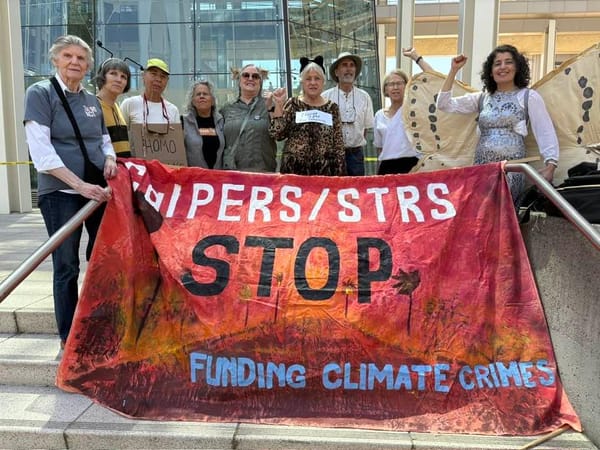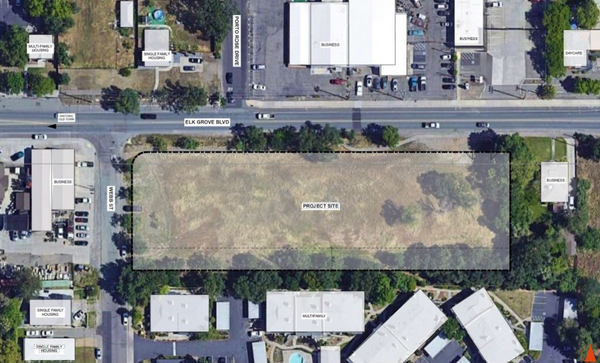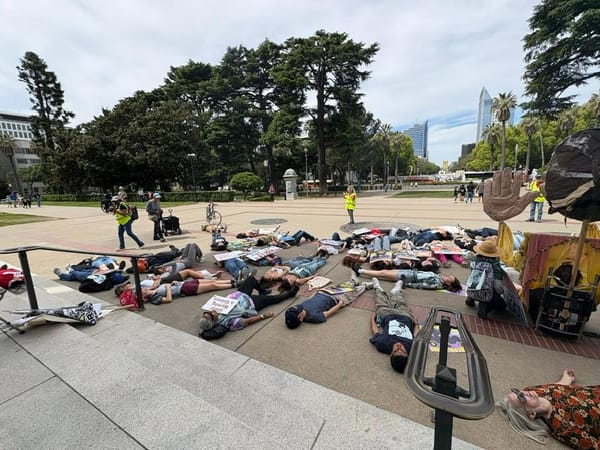Number of oil drilling permits issued in California blows past 15,000 since 2019
CA regulators issue permits for leaky, unproductive wells that should be plugged
Los Angeles, CA—The total number of oil drilling permits issued blew past 15,000 since Governor Newsom took office in 2019. Meanwhile, nearly all permits issued in the first six months of 2023 were to fix unproductive wells, not to drill new ones, Consumer Watchdog and FracTracker Alliance revealed in a press statement on July 13.
The groups said that the “repair, deepening or redrilling of existing wells that produce up to 15 barrels a day–called “stripper” wells– makes no difference to the state’s overall oil production, so the state should order their plugging instead.”
In the second quarter, 92% of the wells that got rework permits produced less than 15 barrels daily, according to CalGEM data analyzed by FracTracker Alliance. Nearly one third of all rework permits granted were for wells within six tenths of a mile (3,200 feet) of communities—the distance that the state set in oil industry-blocked legislation as a public health protection zone.
“In Bakersfield and Arvin, dozens of leaking wells have been discovered in the last year,”
Kyle Ferrar
“The latest permit numbers show approvals to drill new wells have cratered, while permit approvals to rework old leaky wells continue to rise,” said Consumer Advocate Liza Tucker. “The state is simply helping the oil industry cut costs by issuing permits to tinker with unproductive wells rather than making them plug and remediate those wells that endanger the public and environment by emitting toxic compounds. The state should issue no more oil permits. Instead, oil companies should have to plug these wells.”
When drilling operators neglect their obligations to plug or even maintain well sites, leaks can develop very quickly, according to Kyle Ferrar, Western program coordinator for FracTracker Alliance.
“In Bakersfield and Arvin, dozens of leaking wells have been discovered in the last year,” stated Ferrar. “Many of these wells would not be leaking if they had been plugged rather than sold to a stripper well company and reworked. Regulators let operators avoid paying to plug and remediate well sites, even though they produce barely any oil. The rework permits helped larger oil companies like Chevron unload these bad assets on smaller companies destined for bankruptcy.”
Approvals for well rework permits began rising last September when Governor Newsom signed SB 1137, according to Ferrar. That law would have created California’s first public safety zone of 3,200 feet between drilling operations and vulnerable communities.
“But an oil-industry funded referendum to overturn the law on the 2024 ballot suspended its enactment this January. One of the six new drilling permits was issued within the 3,200’ public health protection zone, while all six were within one mile of a home, a distance associated with negative health impacts. Of the total 754 rework, sidetrack, and deepening permits issued, 32% were within the 3,200’ public health protection zone,” Ferrar stated.
Permits to drill new wells of all kinds—from regular oil and gas production wells to wells using more dangerous extraction techniques—fell in the second quarter by a combined 93% over the same quarter last year, according to data from the California Geologic Energy Management Division (CalGEM) crunched by FracTracker Alliance. (See Table 1 below).
“During the second quarter of 2023, CalGEM approved 6 new drilling permits in California,” Ferrar stated. “Those permits included five steamflood wells by E&B Natural Resources Management Corporation in Kern County. While only six permits to drill new wells were issued in the second quarter, 754 permits to rework wells were granted, an increase of 25% over the same quarter of the previous year.”
Table 1. Summary of CalGEM well permitting during the second quarter of 2023. Counts are compared to the second quarter of 2022.

Data courtesy of CalGEM crunched by FracTracker Alliance
The groups said California currently has about 102,000 total unplugged oil and gas wells. Out of those, 40% percent are idle, meaning not worth it to the oil industry to operate to produce oil. Nearly half of the state’s idle wells have stood idle for more than 15 years, according to the think tank CarbonTracker.
“Oil producers are allowed to idle wells indefinitely for a small fee paid to the state, instead of plugging them,” said Ferrar. “But these wells can leak toxic and greenhouse gasses.”
The top 20 oil companies that received the highest counts of rework permits this year operate over 75% of the currently idle wells in California, according to CalGEM data provided to FracTracker. (See Table 3).
Table 2. Idle well counts for California oil and gas operators that received the most rework permits in the second quarter of 2023.

*Three companies on this list run natural gas storage wells, thus they are well operators but not producers of oil and natural gas.
According to CalGEM, 92% of the wells that got rework permits in the second quarter produced less than 15 barrels daily. The state has no rules about how long oil producers can keep running such “stripper” wells that produce hardly any oil.
“California oil and gas operators need to be paying to properly plug and remediate stripper and idle wells rather than conducting reworks,” said Ferrar. “Additionally, 34% of the wells that received rework permits in the second quarter are idle, producing no oil at all. These wells should be plugged instead of reworked, as the data shows rework operations do not substantially increase production volumes for the state.”
Consumer Watchdog and FracTracker Alliance are urging the Governor, lawmakers, and oil regulators to order plugging of both stripper and idle wells. But first, they noted that the amount of well bonding to ensure plugging and remediation as a condition of operating must be significantly boosted.
“Bonding amounts oil producers must put up to work on wells are woefully low, and need to be drastically increased to cover the entire projected costs of future well plugging and site reclamation,” said Ferrar. “When wells are sold, the state should require buyers to put up full bonding as a condition of the well ownership transfers.”
According to the think tank CarbonTracker, California producers are responsible for at least $13.2 billion in onshore decommissioning costs. In its base analysis, CarbonTracker had to exclude a large amount of infrastructure lacking cost data. The think tank compared figures to public estimates and extrapolated to a total of more than $21 billion for decommissioning costs.
“Oil producers shutting down and leaving the state, or selling off wells to small operators, would love the public to be left holding the bag. The state shouldn’t allow that,” concluded Tucker.



